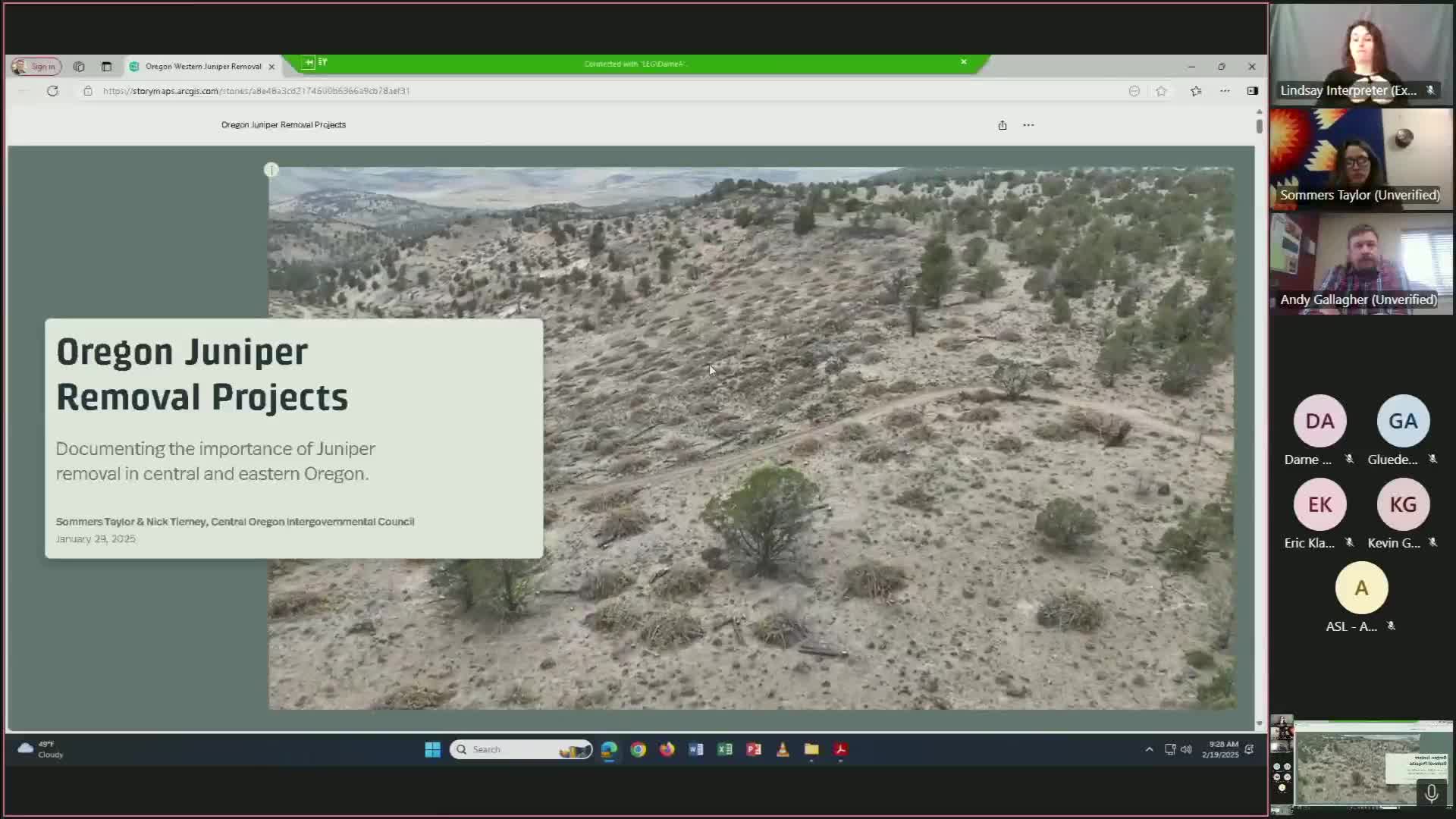Oregon's Cook County implements juniper removal to restore watershed health
February 19, 2025 | Agriculture, Land Use, Natural Resources, and Water, House of Representatives, Committees, Legislative, Oregon
This article was created by AI summarizing key points discussed. AI makes mistakes, so for full details and context, please refer to the video of the full meeting. Please report any errors so we can fix them. Report an error »

In a recent meeting of the Oregon House Committee on Agriculture, Land Use, Natural Resources, and Water, discussions centered on the pressing issue of invasive juniper trees and their impact on local ecosystems and water resources. The committee highlighted the alarming expansion of juniper in Oregon, which has surged by 1,000 to 2,000% in certain areas since the 1800s. This rapid growth poses significant challenges, particularly in terms of water consumption, as mature junipers can sequester approximately 4,815 gallons of water annually, leading to a staggering loss of water resources across affected landscapes.
The committee's focus on addressing this issue is encapsulated in House Bill 2010, which aims to restore soil moisture and improve watershed health by treating dense juniper stands. Two primary methods for treatment were discussed: prescribed burning and mechanical cutting. These approaches not only target the invasive species but also promote the recovery of native grasses and reduce wildfire risks, a concern that resonates deeply with communities across Oregon.
As the meeting progressed, representatives from various soil and water conservation districts shared their experiences and successes in implementing these treatments. For instance, Cook County has embarked on a project to treat around 3,000 acres of juniper-infested land, utilizing a combination of funding sources to enhance their efforts. The results are promising, with early signs of ecosystem recovery, including the return of native shrubs and grasses and improved water flow in local creeks.
The committee also addressed the ecological balance necessary for effective management of juniper populations. While there is a clear need to control the overgrowth, the decision to leave older juniper trees intact was explained as a strategy to maintain habitat diversity and cultural resources. These older trees, which can live for hundreds of years, are seen as vital components of the landscape that can withstand natural disturbances, such as fire.
As the meeting drew to a close, the urgency of the situation was palpable. With over a million acres of juniper now dominating Cook County, the committee's initiatives are not just about managing an invasive species; they are about safeguarding water resources, restoring ecosystems, and preparing for the challenges posed by climate change and wildfire risks. The collaborative efforts of local conservation districts and the state legislature signal a proactive approach to a complex environmental issue, one that could set a precedent for similar initiatives across the region.
The committee's focus on addressing this issue is encapsulated in House Bill 2010, which aims to restore soil moisture and improve watershed health by treating dense juniper stands. Two primary methods for treatment were discussed: prescribed burning and mechanical cutting. These approaches not only target the invasive species but also promote the recovery of native grasses and reduce wildfire risks, a concern that resonates deeply with communities across Oregon.
As the meeting progressed, representatives from various soil and water conservation districts shared their experiences and successes in implementing these treatments. For instance, Cook County has embarked on a project to treat around 3,000 acres of juniper-infested land, utilizing a combination of funding sources to enhance their efforts. The results are promising, with early signs of ecosystem recovery, including the return of native shrubs and grasses and improved water flow in local creeks.
The committee also addressed the ecological balance necessary for effective management of juniper populations. While there is a clear need to control the overgrowth, the decision to leave older juniper trees intact was explained as a strategy to maintain habitat diversity and cultural resources. These older trees, which can live for hundreds of years, are seen as vital components of the landscape that can withstand natural disturbances, such as fire.
As the meeting drew to a close, the urgency of the situation was palpable. With over a million acres of juniper now dominating Cook County, the committee's initiatives are not just about managing an invasive species; they are about safeguarding water resources, restoring ecosystems, and preparing for the challenges posed by climate change and wildfire risks. The collaborative efforts of local conservation districts and the state legislature signal a proactive approach to a complex environmental issue, one that could set a precedent for similar initiatives across the region.
View full meeting
This article is based on a recent meeting—watch the full video and explore the complete transcript for deeper insights into the discussion.
View full meeting
